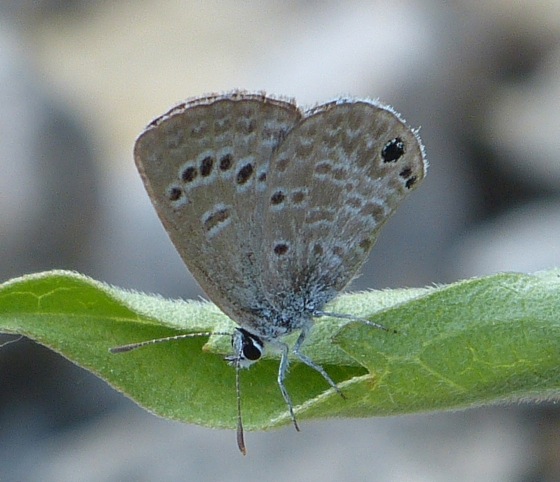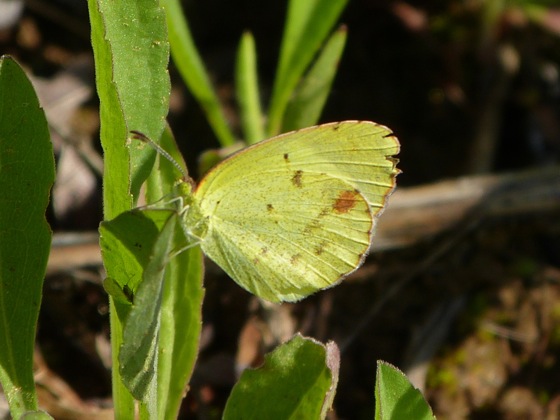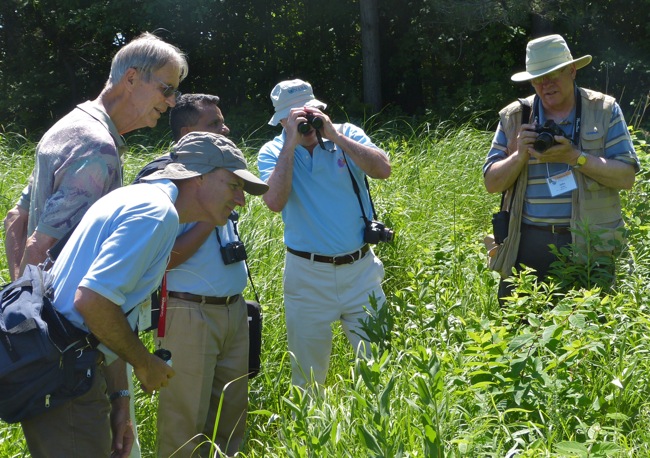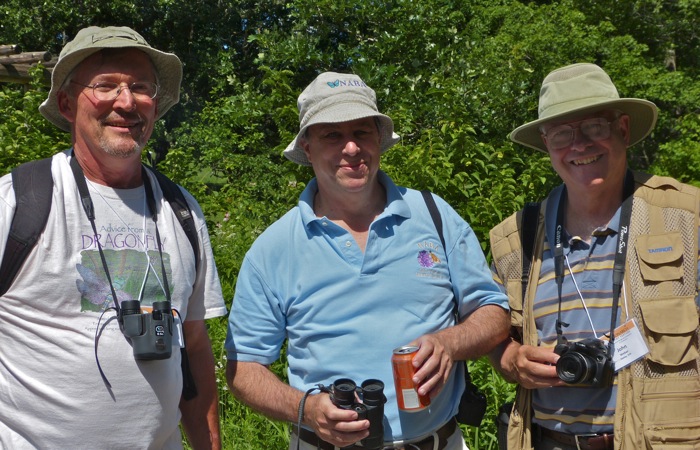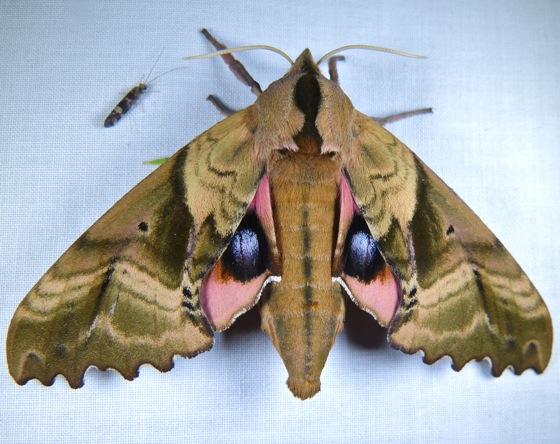We did our annual NABA butterfly count here last week – on July 6th. It was very hot – 97 degrees by the afternoon. Mike Reese, Barb Delaney and I were the counters. We did pretty well in the morning, but by the afternoon we were too hot to want to climb up the hill to get to the top prairies – so we drove the gator up and walked around in the areas that had good butterflies. Even so, we were glad to get back to a cool house.
Here we are at the end of the gator trip. We felt a lot more bedraggled than we look!
We didn’t see as many butterflies this year – we wondered if it was because of the hot weather, or the lack of rain, or the early spring. We saw 34 species – 5 fewer than our record of 39 last year. Here’s a link to our list.
The other exciting butterfly event happened the day after the count. Mike Reese had been looking hard for a small blue butterfly – a Reakirt’s Blue – that is an uncommon stray to Wisconsin. Normally it lives in the southwestern U.S., but this seemed like a good year to find it here – since it’s been so hot, with lots of strong winds from the south. I was cleaning out caterpillar cages outside on Saturday when I noticed a small butterfly fluttering around the edge of the driveway next to the garage – landing on the small plants that grow up through the gravel. It was a Reakirt’s Blue! A female, and she was laying eggs on the flowers of a leadplant that grows right at the edge of the cliff, next to the driveway, and possibly also on the white sweetclover.
Reakirt’s Blue
Reakirt’s Blue
Reakirt’s Blue
A few more southern strays have been around lately.
Little Yellows come up here some years, but not others. This year there have been many of them in the prairie I planted on the slopes around the house. Their caterpillars eat Partridge Pea, and we have lots of that. They raise several generations here, but then can’t survive over the winter.
Little Yellow
One more stray that I’ve seen this year is a Gray Hairstreak. They’re a common butterfly in most of the U.S., but not here in Wisconsin. I saw this one on July 9th, also in the prairie near the house, while I was looking for the Reakirt’s Blue.
Gray Hairstreak
A few weeks ago I helped with a butterfly count at a conference that my friend Karen Oberhauser was organizing. The conference was about Monarch Butterflies, but they wanted to do a pretend butterfly count, so people could see what one was like. We were lucky to have Jeff Glassberg (from NABA) and Mike Reese to help lead the count. It was great fun – we did the pretend count one day, and then Jeff led another group the next day, to look at more butterflies.
Here are a bunch of butterfly folks checking out a butterfly that Jeff had spotted.
Jeff Glassberg
And here are the three experts in the group – Mike Reese, Jeff Glassberg, and John Weber.
Back at the farm – I’ve been seeing some nice dragonflies in the last few weeks. One of my favorites is the Halloween Pennant.
And – a new one for me – an Eastern Amberwing. This species is very small – its body is only about an inch long.
I’ve been seeing plenty of moths at the farm these days. Here are a few of my favorites.
The Pink-Streak – an uncommon moth – one I’d never seen before
This is a Beautiful Wood Nymph. They keep their wings folded when they’re resting, so it’s difficult to see their underwings – which are bright yellow.
I finally got a photo that shows a little bit of the underwings. Mike Reese poked the moth, and when it flew and flapped its wings, I followed with the camera, snapping pictures, and got one photo with its wings still slightly extended.
Painted Lichen Moth
Blinded Sphinx – with nice eye-spots on the underwings
Pandoras Sphinx – one of my favorites. Its wingspan is about 4 1/2 inches.


